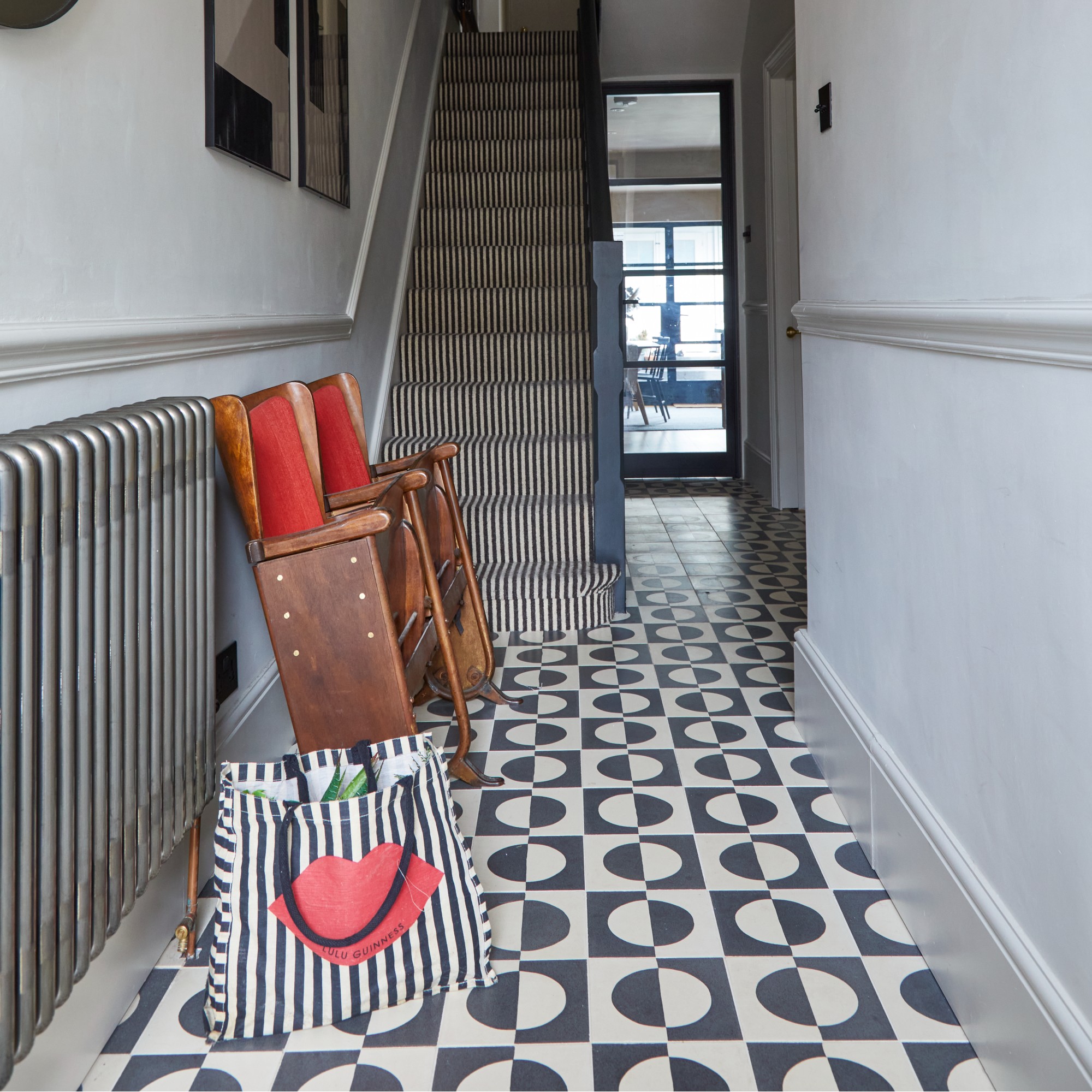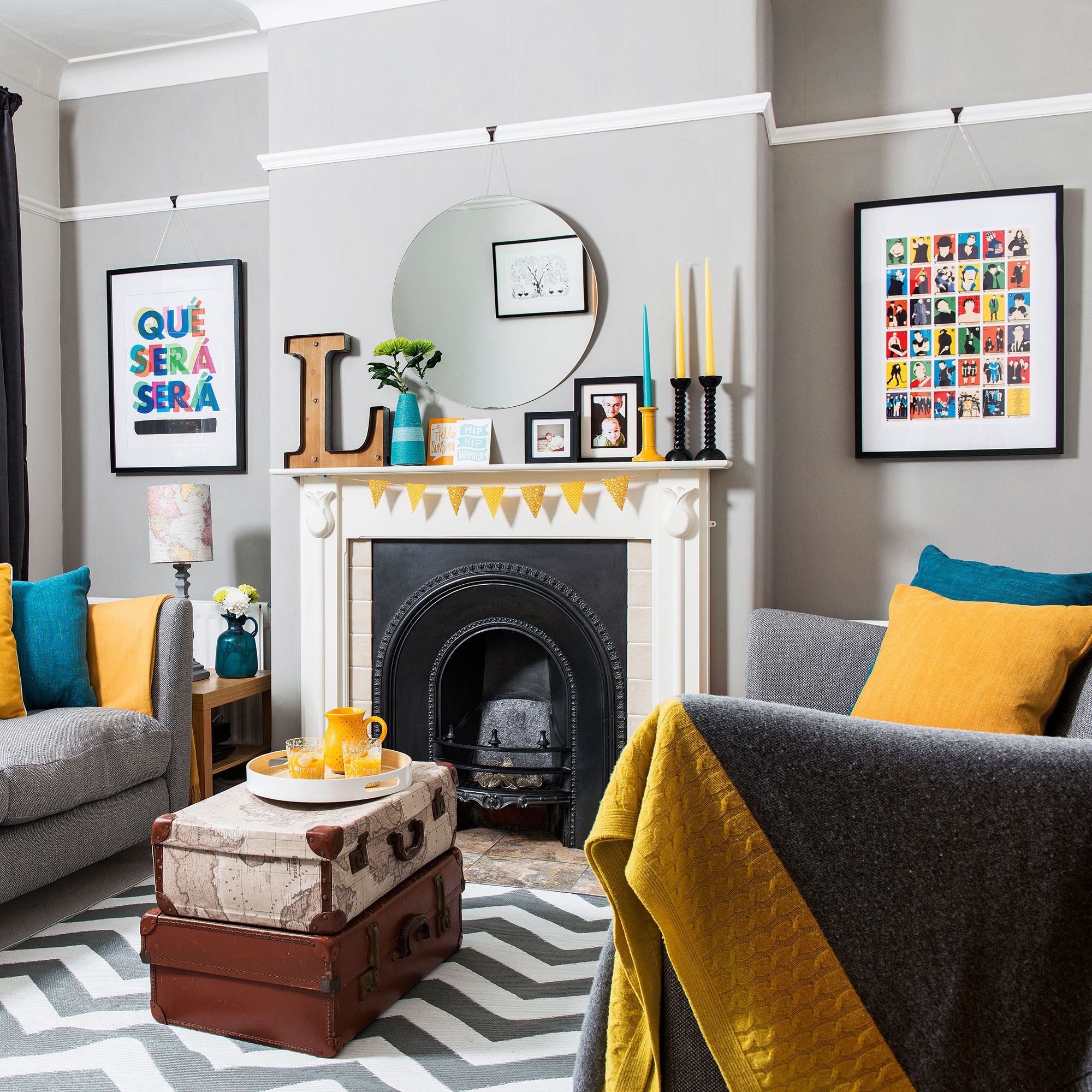Should your woodwork match your wall colour? What you might be doing wrong...
The detail that makes all the difference


It's a question we've all asked ourselves when decorating – should your woodwork match your wall colour? We've spoken to the paint and colour experts to find out, and the answer depends on both your property and what style you're aiming for.
If you’re persuaded away from white, a whole world of colour combinations opens up to you. If you like the fresh pop of white trim and appreciate the definition it brings – especially if you love neutrals and don’t want them to blur into a soupy scheme, consider putting a brighter colour on your woodwork.
However, if you’re aiming for a simple scheme that minimises the visual clutter, painting the woodwork to match your walls is a useful trick in your interior-design repertoire.
‘There is a distinct move away from the habitual approach of painting woodwork and skirting boards white,' explains Little Greene’s creative director, Ruth Mottershead. 'It is a fantastically safe option and works in any style of property, with many design styles, but having white woodwork when you have colour on the walls can feel stark. It is simply a functional base to a design scheme rather than an integral, cohesive part of it.’
Should your woodwork match your wall colour?
The short answer is that it depends on the feel you want to create in the room. So, is your vibe going to be calm and contemporary or sassy and stimulating? We asked an interior designer and two paint experts to break it down…
3 times you should paint them the same
1. When you want a simple, co-ordinated look

‘Using a single hue across both walls and woodwork fosters and calming and cohesive atmosphere that’s perfect for a relaxed feel – especially in blue, green or neutral tones,' advises Anna Hill, colour guru at boutique paint brand Fenwick & Tilbrook.
;In deeper, richer shades, embracing the effect and “colour drenching” can envelop the room in colour, creating a luxurious and cosseting feel.’
Sign up to our newsletter for style inspiration, real homes, project and garden advice and shopping know-how
2. To make a room look bigger

I’m a big fan of colour drenching,' reveals interior designer and maximalism pioneer Abigail Ahern. 'Painting out the walls, ceiling and wood work in the same colour blurs the boundaries and makes the room feel bigger. It also creates a seamless transition into the rest of your rooms.'
'If you have a white ceiling, you accentuate the boundaries and quite often the lack of height in that room. Pushing the same colour around the whole room creates an uninterrupted backdrop for your furniture, rugs and accessories.’
3. Because you have a contemporary aesthetic

‘Love a bold, modern look?’ asks Fenwick & Tilbrook’s Anna. ‘Then I’d suggest colour drenching – and don’t forget your ceiling, the fifth wall.’
‘It can be applied to a variety of different spaces, creating an interior that lifts the mood and feels really engaging, inviting and contemporary,' adds Ruth from Little Greene.
If you live in a period home and think this approach won’t work for you, never fear. ‘This technique softens architectural detailing,' explains Ruth. 'That means it’s suitable for period properties with traditional panelling, cornicing and picture rails as well as modern spaces with little architectural detailing. Painting one colour all over delivers a contemporary feeling anywhere.’
3 times you should never paint them the same
1. You want architectural details to stand out

‘If you’re lucky enough to have wonderful architectural details such as archways, mouldings or picture rails in your home, paint is the perfect way to highlight them to create a design detail,' says Ruth.
‘Using a contrasting colour on woodwork can really help to highlight architectural details, adding depth and definition to the space,' agrees Anna. 'It can also be a great way to introduce a small pop of colour without having to be too daring!'
'Just painting your skirting board in a bright colour can add a playful feel to your space without overwhelming it. For a more classic look, timeless white woodwork never goes out of style and provides a crisp, clean finish.’
2. When a ‘blah’ scheme needs bringing to life

Are you a fan of neutral colour schemes? Then you need to paint your walls and woodwork in different colours. ‘To create dynamism within a scheme, consider a boldly contrasting colour on your woodwork,' says Ruth. 'Or even think about the addition of an accent colour on a door or window frame. This is a quick and easy way to transform a room or define an area.’
‘It will add impact and an element of surprise to an otherwise muted scheme, without feeling overpowering. Woodwork is also the perfect place to be more adventurous with colour,' continues Ruth. 'Updating skirting and frames can have a truly transformative effect and is less overwhelming than redecorating the whole room.'
'It’s particularly easy if you have a patterned wallpaper, as you can pull out a shade from the design for your woodwork colour. This trick helps to draw all elements of the scheme together.’
If you’re not confident at combining colours, use the colour wheel to pick complementary contrasting colours for your walls and woodwork.
3. When you want a softer contrast

'For a gentler approach, consider selecting tones of one colour and using them across the room,' suggests Ruth. 'Put the darker tone on the walls and the lighter shade on woodwork to give a cohesive look with a nod to the traditional distinction between woodwork and walls.’
The final word
‘There are a multitude of options when it comes to painting your woodwork,’ sums up Ruth, ‘each creating a different atmosphere in a space. A contrasting colour will create a bold, dynamic feel; using tones of one colour or “colour drenching” both walls and woodwork the same colour will feel calmer and more cohesive.’
FAQs
What colour should I paint my walls if I have wood trim?
That depends on two things: the darkness of the wood and your interior aesthetic. If the timber is pale, like natural oak, pine or tulipwood, greens, whites and cool neutrals like grey are a good pairing. For darker woods like walnut or stained oak, choose richer contrasts with warm pinks, blues and ochre yellows.

Vanessa Richmond has been a freelance writer, editor and editorial consultant since 2021. Her career in magazines began in 1998 and, apart from a four-year stint at women’s lifestyle magazine Red, it has been spent working on interiors titles including House Beautiful, Country Homes & Interiors and Style at Home. She is a former editor of Ideal Home, Country Homes & Interiors and Style at Home magazines. She has also worked for House Beautiful and Red. During her 25 years as a journalist, she has been a sub-editor, columnist, deputy editor and editor. Now she combines freelance writing with being a secondary-school English teacher.